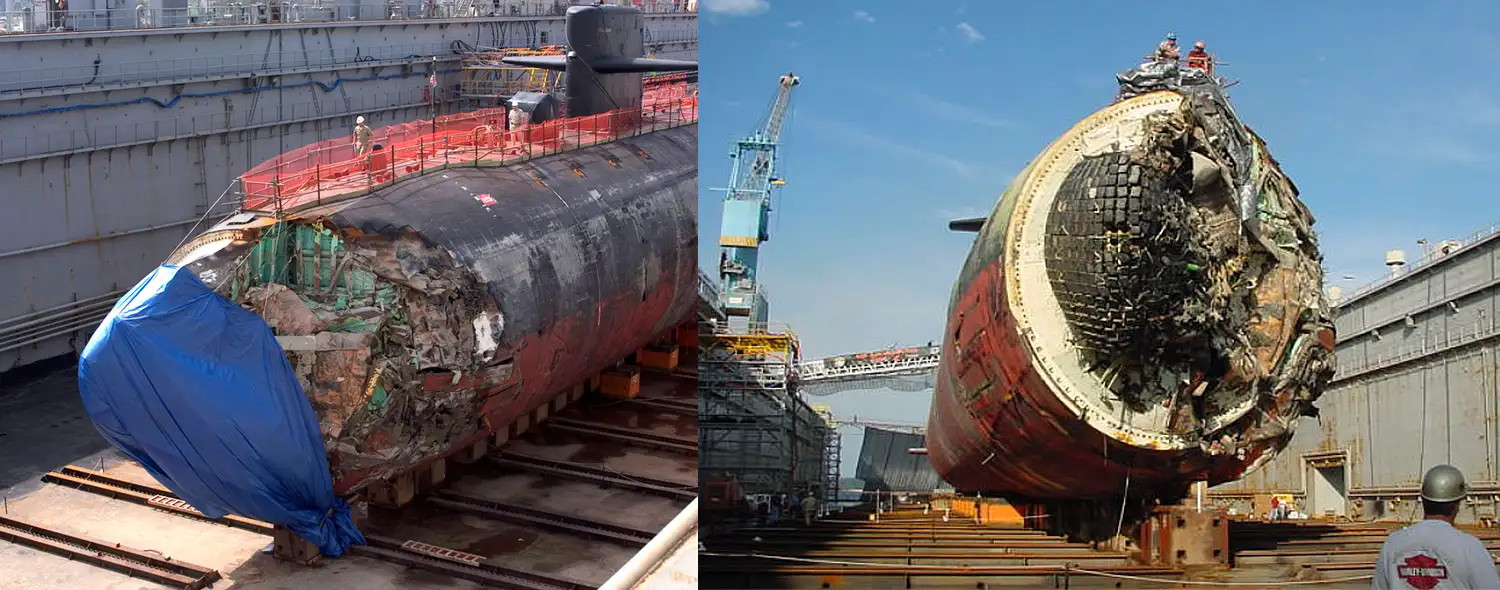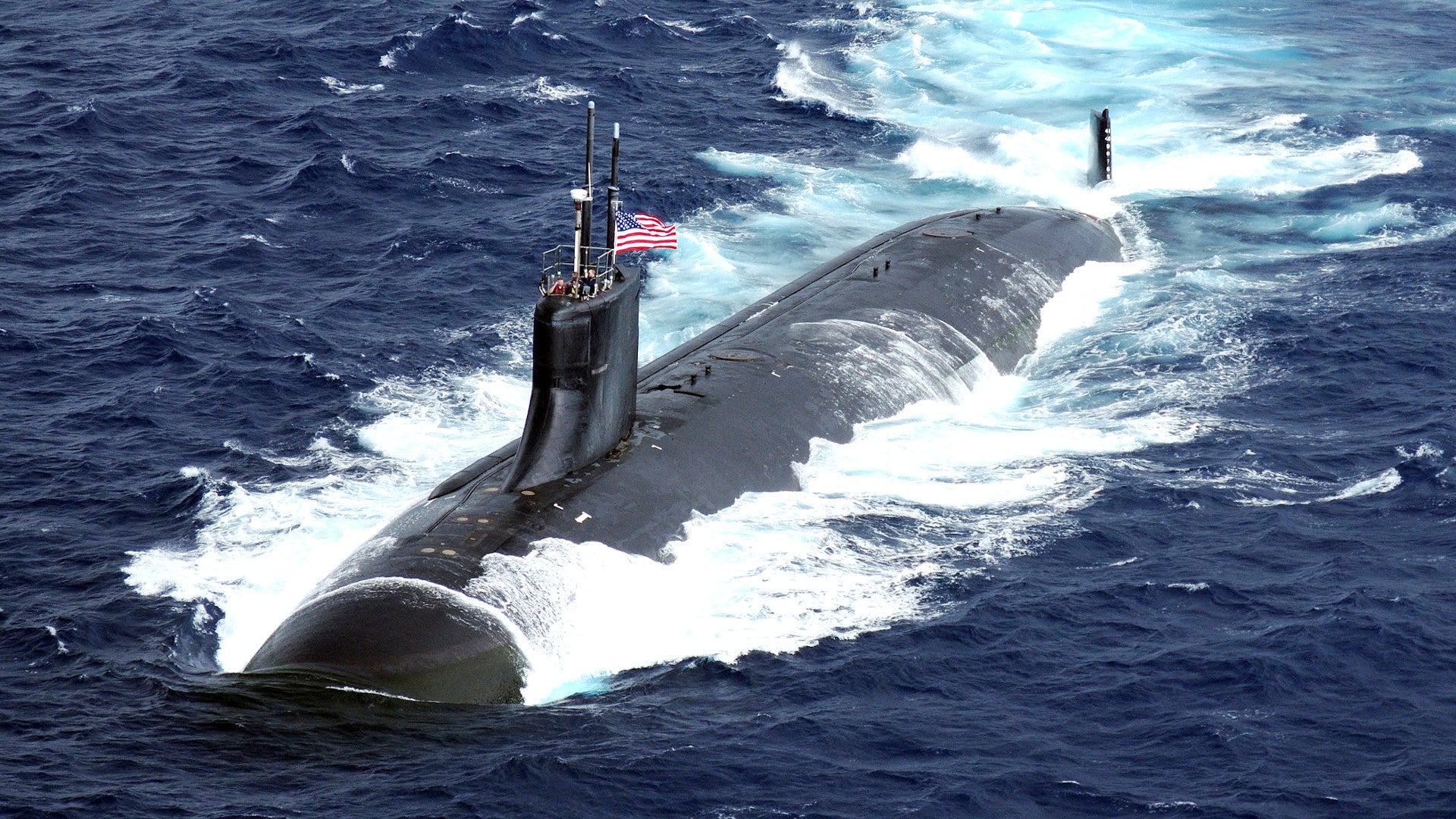The first clues as to how much it might cost to repair the U.S. Navy’s damaged Seawolf class nuclear attack submarine USS Connecticut can be found tucked away in the latest version of the annual defense policy bill for the 2022 Fiscal Year. The legislation approves $10 million to help pay for a new bow sonar dome and another $40 million for other “emergent repairs.”
Craig Hooper, writing for Forbes, was first to notice these details about funding for Connecticut’s repairs. The Senate passed this bill, formally known as the National Defense Authorization Act (NDAA) for Fiscal Year 2022, earlier this month, and it is now waiting on President Joe Biden to either sign it into law or veto it. Both houses of Congress had been picking over this piece of legislation for months, more than enough time to add in money for fixing Connecticut, which lost its sonar dome and sustained other damage as a result of a collision with an underwater seamount in the South China Sea in October.


After the accident, the submarine had limped to Guam, where it spent some two months undergoing initial evaluations of the damage, the full extent of which remains unknown, as well as interim repairs and unspecified testing. The boat finally arrived in Washington State this weekend after an arduous journey across the Pacific Ocean from Guam by way of San Diego in Southern California. Connecticut reportedly could not safely dive after the mishap and this, combined with impacts to its handling and performance from the missing sonar dome and other damage, likely made this a nightmarish voyage for those on board, as The War Zone
No further context about the repairs that Connecticut now needs is found in the NDAA, nor is there any indication one way or another about whether this is the only funding that is expected to be required to get the boat back to the fleet. One would think that the sonar dome for such a specialized submarine as this alone would cost much more than $10 million. Overall, it seems extremely likely that this is just an initial portion of the total cost it will take to return this submarine to service.
For comparison, in 2006, the Navy estimated that it would take $79 million, almost $109 million in today’s dollars, to fully repair the Los Angeles class attack submarine USS San Francisco, which had sustained extensive damage to its bow after its own underwater collision with a seamount the year before. The service’s repair plan, in that case, involved grafting the entire front end of a different Los Angeles class submarine, the USS Honolulu, onto San Francisco. It ultimately took three years and $134 million, or close to $173 million when adjusted for inflation, just to get that submarine back in the water.

The Navy decided on this course of action because San Francisco had recently had its nuclear reactor refueled and Honolulu was due to undergo a similar overhaul, which is a costly and complex process. The service estimated it would have cost $170 million in 2006 dollars, or around $234 million in today’s dollars, to refuel Honolulu.
Whatever the extent of the damage to Connecticut might be, a similar ‘nose job‘ isn’t a viable option in this case. Only three of the advanced and secretive Seawolf class submarines were ever built and they are in high demand for a variety of specialized tasks. The third boat in the class, the USS Jimmy Carter, is, in fact, the lone example of a distinct subclass, featuring a 100-foot long Multi-Mission Platform (MMP) hull extension, which you can read more about here. While intelligence-gathering is understood to be a key mission for all of these submarines, Jimmy Carter‘s MMP and other reported modifications give it the ability to conduct more extensive underwater espionage missions, including inspecting, recovering, and otherwise manipulating objects of interest on the seafloor.
In addition, the small size of the Seawolf fleet, together with the fact this design dates back to the 1980s and has long been out of production, meaning that institutional knowledge about its particulars has likely atrophied within the Navy and its manufacturer, General Dynamics Electric Boat, are all likely to impact the size of the final repair bill. USS Seawolf and her sister ships remain the most expensive attack submarines ever designed, with the standard boats having an estimated unit cost of $3.1 billion in 1983, or over $8.5 billion today, and Jimmy Carter costing even more.

All of this underscores that it is possible, if not extremely plausible that $50 million will just be the downpayment toward getting Connecticut fully repaired. How much it will cost in the end, and how long it will take to actually fix the submarine, remain to be seen.
At the same time, the Navy is not even expecting to order its first next-generation SSN(X) nuclear attack submarine, which it wants to be at least a spiritual successor to the Seawolf class, until the 2031 Fiscal Year. Beyond that, the Navy’s submarine fleets, as a whole, are already struggling to meet operational demands, which are only likely to grow amid a growing emphasis on preparedness for a future major conflict against a near-peer adversary, such as China or Russia. Chinese and Russian undersea threats have themselves prompted a renewed interest in anti-submarine warfare capabilities within the Navy.
So, there is every indication that the service is committed in the meantime to spending whatever it takes to ensure it can regain the distinct capabilities that Connecticut offers.
Contact the author: joe@thedrive.com
